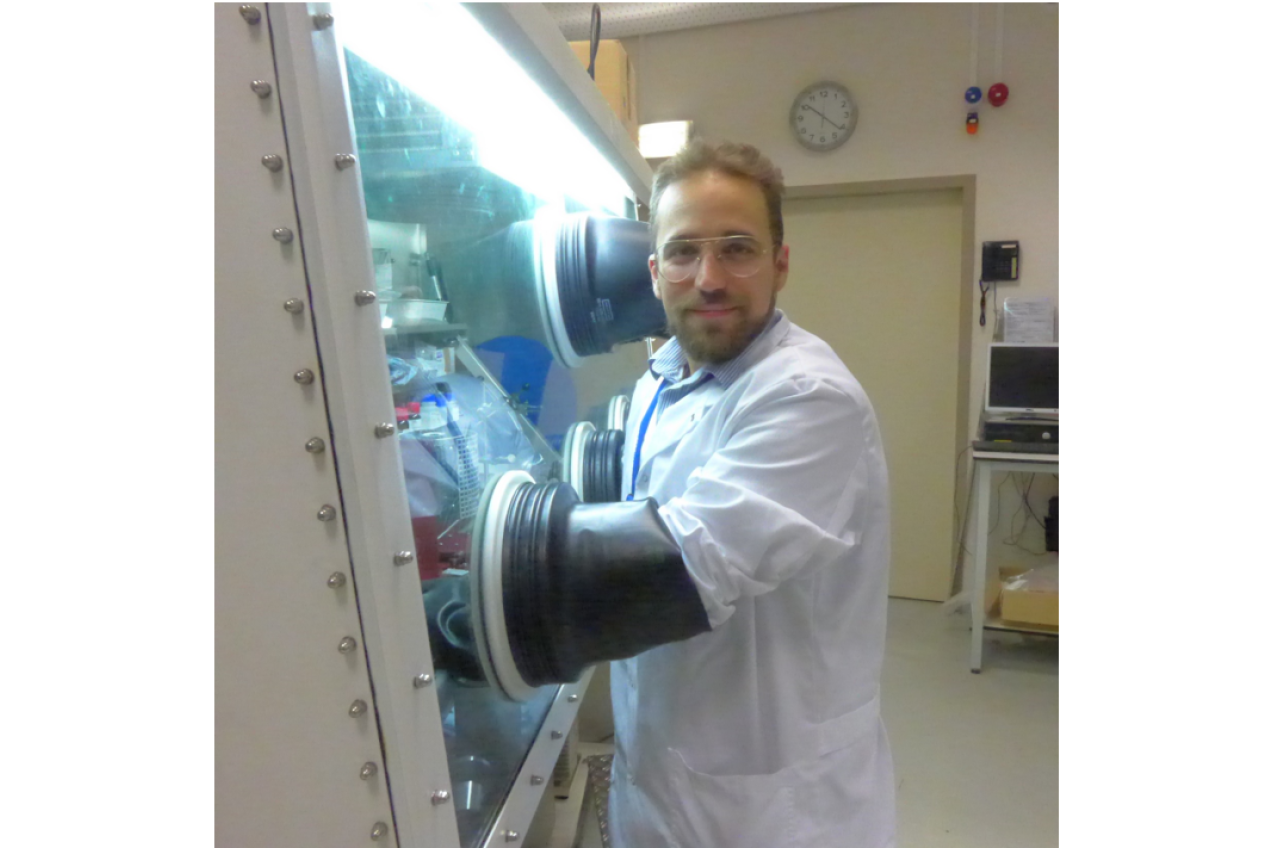PhD Defense | Giacomo Gregori | Electrochemical Measurement of Corrosion Product Thermodynamic Properties in Lead-Bismuth Cooled Nuclear Reactors by Solid-State Ionics
Name: Giacomo Gregori
Date:
November 29, 2023
16h00 - 18h00
Location:
Room P.A2.120
Campus La Plaine
Boulevard du Triomphe 155
ULB
1050 Brussels

Electrochemical Measurement of Corrosion Product Thermodynamic Properties in Lead-Bismuth Cooled Nuclear Reactors by Solid-State Ionics
Heavy liquid metals (HLMs) ‒ such Pb and Pb-Bi eutectic alloy (LBE) ‒ are attractive coolants for the advanced generation of nuclear fission reactors, such as Lead-Cooled Nuclear Fast Reactors (LFRs) and Accelerator Driven Nuclear Systems (ADSs). HLM coolants corrode the reactor structural materials, releasing steel corrosion products (i.e. Fe, Cr, Mn, Ni and Co). These corrosion products are then oxidized in the coolant, forming solid oxide slags which can cause pipeline-blockage in the nuclear reactor core or heat-exchanger. Thus, a thorough characterization of the chemistry of corrosion products in HLMs is needed, particularly in accurately determining fundamental thermodynamic properties, such as the elemental solubility of metal impurities. This work explores the application of solid-state ionics to measure in-situ the elemental solubility of critical corrosion products in LBE expected from LFRs or ADSs (Fe, Co and Ni). This work commenced with the development of Ni-β”-Al2O3 and Fe-β”-Al2O3 ion-selective solid electrolytes, by liquid and vapor ion-exchange on Na-β”-Al2O3 substrates. However, this method consistently yielded limited exchange, and caused severe degradation and cracking in the material. Consequently, these electrolytes were not suitable to detect nickel or iron in LBE. Alternatively, an indirect electrochemical method has been developed to measure the elemental solubilities in LBE using oxygen coulometric titration. After dissolving a metal impurity in LBE nearing the saturation, it is oxidized by adding oxygen in the melt using an electrochemical oxygen pump (EOP), while the dynamic response of the oxygen concentration is monitored by an electrochemical oxygen sensor (EOS). The evolving oxygen concentration is numerically analyzed to obtain the metal oxide solubility product. Eventually, combining the experimental solubility product with the thermochemical data of the involved species, the elemental solubility of the impurity can be derived. The method was validated for the Fe(LBE)-Fe3O4(s) equilibrium by measuring the magnetite (Fe3O4) solubility product and the iron solubility in LBE in the thermal range of 723 ‒ 826 K. The results aligned with previous literature. The method was then applied to measure the solubility product of cobalt monoxide (CoO) and the cobalt solubility in LBE in the thermal range of 673 ‒778 K. Nevertheless, this method could not be applied effectively for highly soluble elements in LBE, like Ni. A combined metallographic and electrochemical methodology was applied to characterize the formation of nickel oxides and intermetallic compounds in LBE. Metallographies of solid nickel exposed to LBE revealed the formation of NiBi3 intermetallic in the thermal range of 469 ‒ 748 K. The dissolution of a controlled amount of nickel in LBE induced the ternary equilibrium Ni(LBE)-NiO(s)-NiBi3(s), from which the equilibrium oxygen concentration was measured in the thermal range of 518 ‒ 595 K. The oxygen concentrations were combined with thermodynamic data from literature to be eventually converted into the equilibrium activities of nickel. The resulting activities were used to derive the concentration of nickel limited by the precipitation of NiBi3. In conclusion, in this study new electrochemical methods based on solid-sate ionics were developed and validated and applied to measure the elemental solubility of Fe, Co and Ni in molten LBE.
Promotor:
-
Thomas Doneux (ULB)
SCK CEN mentors:
-
Jun Lim (SCK CEN)
-
Alexander Aerts (SCK CEN)
Click here for a list of obtained PhD degrees.